Mon 20 Feb 2012
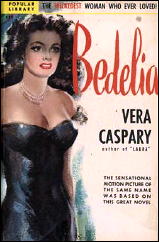
BEDELIA. British National Films, 1946. Margaret Lockwood, Ian Hunter, Barry K. Barnes, Anne Crawford, Beatrice Varley, Louise Hampton, Jill Esmond. Co-screenwriter: Vera Caspary (with Herbert Victor and Isadore Goldsmith) based on her novel of the same title. Director: Lance Comfort.
I’m not sure if anyone could review this film without giving away more of the plot than you’d like to know – certainly more than I’d care to read myself – so take this as a [WARNING] that there’s a good strong possibility I may cross some sort of line you’d rather not have crossed, as far as you’re concerned. (Personally I like to know as little about a movie I’m watching or a book I’m reading as I can get away with.)
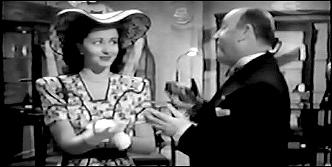
In one sense this is a straightforward and relatively minor crime novel, but if you have the chance to see this movie, I am willing to wager that you will agree that this is not so.
We quickly learn that Margaret Lockwood’s character has just married Ian Hunter’s character, Charles Carrington. She’s young and beautiful; he’s an older, well-established type. Not exactly rich, but well enough off that we quickly know why she married him, or we think we do.
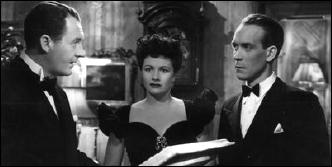
Following her (and then them) around during their honeymoon in Monte Carlo with unknown intentions, however, is Barry Barnes’s character, Ben Chaney (on the right), insinuating himself into their life first with a small dog, then as an artist who’d like to paint her portrait. (She, Bedelia, does not like to have photographs of herself, but agrees to sit for Chaney to please her new husband.)
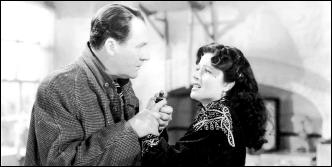
We’d like to know that Bedelia is innocent of any wrongdoing, since Chaney’s persona is that of a sneaky weaselly sort of fellow, but she is far from convincing in the falsehoods she tells, and we fear the worse, even back in England when Charles needs to get back to work, where he’s assisted (and more than likely, secretly loved) by his secretary Ellen (Anne Crawford).
Straightforward enough, as I said up top, but there is also a strange undercurrent going on in this movie. Eventually Bedelia’s lies catch up to her, but who will her husband believe? Bedelia, or the artist who’s also living under false representation?
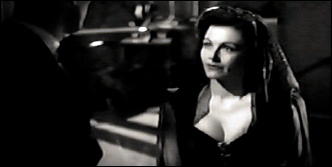
If you don’t sense what’s not precisely stated in the story line, you probably won’t make much of this movie, translated from Connecticut in 1913 in the book to England perhaps 25 years later. (The manor house snowed in during a storm makes one think of the standard cliche of the Golden Age of Detection, but no, that’s not the kind of mystery this movie is.)
But there’s more to the story than exactly meets the eye, and as I said in my opening remarks, I hope I haven’t said more than I should have. And to their discredit, the other reviews I’ve read on this movie have almost always said more. I’m glad I didn’t read them before I watched the movie for myself. I enjoyed it.
Note: To watch the first eleven minutes of the film, check out this YouTube clip here.

February 20th, 2012 at 11:59 pm
I saw this a couple months ago and of course since Vera Caspary had such a big success with the great film noir LAURA, I started thinking about the two movies and which was better, etc. Though I enjoyed BEDELIA, to me it simply is not on the same level as LAURA, which was filmed a couple years before in 1944.
But Guy Savage on the web site “Film Noir of the Week”, actually thinks it is a better film than LAURA. I disagree and so does Michael Keaney in BRITISH FILM NOIR GUIDE. He says “BEDELIA has none of the elegance and style of LAURA…”
Still, these British film noirs are often fascinating and proof that quality film noir existed in Europe.
February 21st, 2012 at 12:42 am
Walker
Here’s the link to the review on the Film Noir of the Week blog:
http://www.noiroftheweek.com/2010/07/bedelia-1946.html
It’s actually more than a review, it’s an in-depth analysis of the movie, and truthfully he saw more in it than I did. Like you, I don’t think BEDELIA has anywhere near the depth of LAURA. I enjoyed the former, but I haven’t any desire to see it again. Whereas LAURA, I could watch it once or even twice a year, and enjoy it every time.
I should have warned everyone before checking out the link above that in order to do the in-depth analysis Guy Savage does, he has to tell you everything that happens in BEDELIA, so much so that there is little to no point in your watching it yourself. Part of the enjoyment of the film is NOT knowing what’s going on — although you certainly have suspicions — and continuing to watch until you find out whether you’re right or not, or whether the story is going somewhere else altogether.
February 23rd, 2012 at 10:22 am
As an admirer of the work of Lance Comfort, and a fan of Margaret Lockwood, I’m pleased to see some recognition for BEDELIA. Guy Savage made some interesting observations in his review, though his favourable comparison to LAURA is pushing it a bit.
The following year, Comfort made DAUGHTER OF DARKNESS, another melodrama about a female serial killer, who, like Bedelia, is portrayed in a more sympathetic light than the person responsible for bringing her to justice.
According to one article, a different ending had to be shot for BEDELIA’s American distribution to comply with the Hays Office. Trying not to reveal too much, let’s just say that it involved an arrest, rather than a suicide. Does any one know any thing about this?
February 24th, 2012 at 2:08 am
I checked several of my film noir reference books but could not find any mention of the American different ending. However, Bosley Crowther in a negative review for the New York Times, mentions the arrest as described in Comment #3. The bootleg dvd I have is the British version showing the suicide.
So, it looks like the American version was a victim of the usual silly censorship that so many films had to suffer. It’s always been a puzzle to me why censors think adults have to be treated like children.
February 24th, 2012 at 9:04 pm
Thanks for the quick reply, Walker. I suppose I shouldn’t be surprised to learn that they filmed a different ending for the US release, but call me naive, I am. Luckily I have the same British version that you have.
I haven’t read the book, but I assume it also ends with Bedelia’s suicide. I can’t think of any reason for the UK filmmakers to have changed it. Anyone know for sure?
February 27th, 2012 at 11:53 am
Brian McFarlane, after discussing the film in some depth in his book on Lance Comfort, states; “In the US version, so as not to transgress censorship codes, she confesses to the police”.
He makes no further comment on this, but I do know that at the time, suicide, which was Bedelia’s fate in the original novel, was discouraged by the Hays Production Code.
This was a period when there were several recorded instances of British films running into distribution problems in the US because they’d offended the against the code in some way. So from a producer’s position an alternative ending was the logical response.
October 31st, 2013 at 4:38 pm
Read the book last year 2012 and purchased the DVD from a guy in the U.K. which I believe is a Carlton Cinema TV copy. Movie is good but 1946 styles in a 1938 setting? “Laura” is very good & probably a more expensive production @ TCF in the U.S. Some Bedelia sets are obviously artificial but the movie is enjoyable and should have been released commercially on DVD due to its star power as should: “Blue Lagoon” the 1949 version with Jean Simmons.